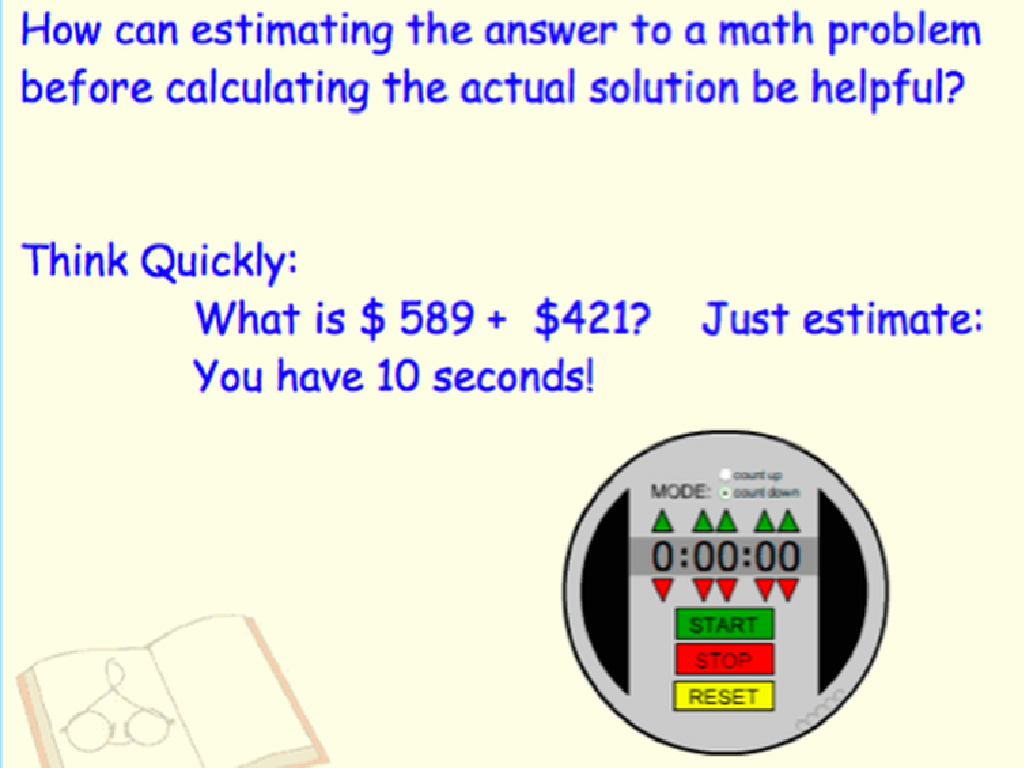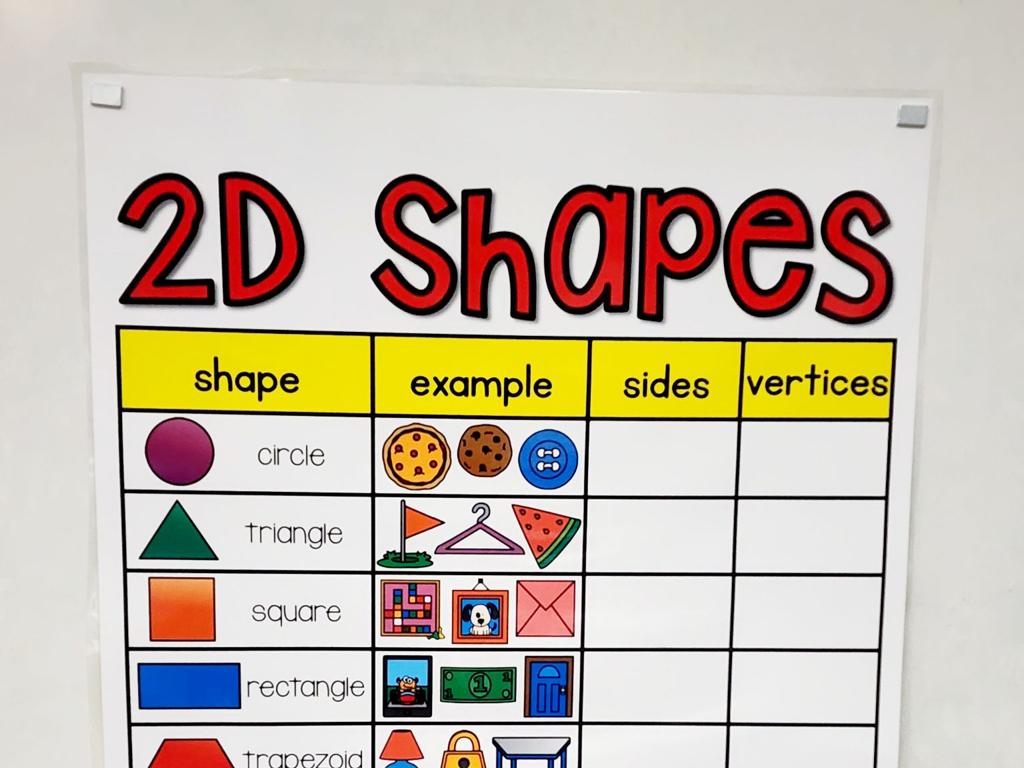Parallel Sides In Quadrilaterals
Subject: Math
Grade: Fourth grade
Topic: Quadrilaterals
Please LOG IN to download the presentation. Access is available to registered users only.
View More Content
Exploring Quadrilaterals
– Quadrilaterals in our world
– Shapes with four sides everywhere: tables, windows, and books
– Defining a quadrilateral
– A shape with four straight sides and angles
– Characteristics of quadrilaterals
– They have two pairs of parallel sides, like rectangles
– Parallel sides in quadrilaterals
– Parallel sides never meet, no matter how long they extend
|
Begin the lesson by pointing out the presence of quadrilaterals in everyday life, such as tables, windows, and books, to make the concept relatable. Define a quadrilateral as a four-sided polygon and discuss its basic properties, including the fact that it has four angles. Emphasize the characteristic of having two pairs of parallel sides, which is common in shapes like rectangles and squares. Explain that parallel sides are lines that run alongside each other at the same distance apart forever without intersecting. Use real-life examples to illustrate parallel sides, such as the opposite edges of a book or sides of a door. Encourage students to look for and identify quadrilaterals in the classroom or at home as a practical exercise.
Exploring Quadrilaterals
– What is a quadrilateral?
– A shape with four straight sides
– Types of quadrilaterals
– Squares, rectangles, trapezoids are examples
– Quadrilaterals have four vertices
– ‘Vertices’ are where the sides meet
– Recognizing quadrilaterals
|
Begin the lesson by defining a quadrilateral as a polygon with four sides and four vertices. Provide visual examples of different quadrilaterals such as squares, rectangles, and trapezoids to help students recognize them. Explain that the term ‘vertices’ refers to the corners of the shape where two sides meet. Encourage students to look around the classroom or at home for objects that have a quadrilateral shape to reinforce the concept. The goal is for students to understand the basic properties of quadrilaterals and be able to identify them in various contexts.
Characteristics of Quadrilaterals
– Quadrilaterals and side lengths
– Some sides are the same length, others are not
– Right angles in quadrilaterals
– Some quadrilaterals have right angles, others don’t
– Sum of angles in quadrilaterals
– All quadrilaterals add up to 360 degrees
|
This slide introduces students to the basic characteristics of quadrilaterals. Emphasize that quadrilaterals are four-sided figures and can have sides that are either equal or unequal in length. Discuss the presence of right angles in certain quadrilaterals like rectangles and squares, while others like rhombuses and parallelograms may not have any right angles. Highlight that regardless of the side lengths or angles, the sum of all internal angles in any quadrilateral is always 360 degrees. Use visual aids to help students remember this key fact, and consider providing examples of different quadrilaterals to illustrate these points. Encourage students to draw their own quadrilaterals and practice identifying these characteristics.
Parallel Sides in Quadrilaterals
– What are parallel sides?
– Lines that run side by side and never cross
– Rectangles & squares have them
– Look at your rectangle: opposite sides don t meet
– Other quadrilaterals with parallels?
– Think of shapes like rhombuses or parallelograms
– Exploring parallel sides in shapes
|
This slide introduces the concept of parallel sides within the context of quadrilaterals. Begin by explaining that parallel sides are lines that remain the same distance apart and never intersect. Use rectangles and squares as familiar examples to show that their opposite sides are parallel. Encourage students to think of other quadrilaterals that have parallel sides, such as rhombuses and parallelograms, and discuss how we can identify parallel sides in various shapes. This will help students recognize patterns and understand the properties of different quadrilaterals. Provide hands-on activities with shape cutouts for students to explore and identify parallel sides.
Identifying Parallel Sides in Quadrilaterals
– Explore different quadrilaterals
– Look at squares, rectangles, and other 4-sided shapes
– Use a ruler to check parallel sides
– Line up the ruler with the sides to see if they don’t meet
– Practice finding parallel sides
– Use the worksheet to mark parallel lines in shapes
– Recognize patterns in quadrilaterals
|
This slide is aimed at helping students understand the concept of parallel sides within quadrilaterals. Begin by showing various quadrilaterals such as squares, rectangles, parallelograms, and trapezoids. Demonstrate how to use a ruler to check for parallelism by aligning it with one side and seeing if it runs along another without intersecting. Provide a worksheet with different quadrilaterals and instruct students to use their rulers to find and mark the parallel sides. Encourage them to look for patterns, such as opposite sides being parallel in certain quadrilaterals. This activity will help solidify their understanding of parallel sides and how to identify them.
Parallel Sides in Quadrilaterals
– Parallel sides in daily objects
– Books, screens, and doors have parallel sides
– Strength from parallel sides
– Structures like bridges use parallel lines for stability
– Activity: Drawing quadrilaterals
– Use a ruler to draw shapes with parallel sides
|
This slide introduces students to the concept of parallel sides in quadrilaterals by relating it to objects they see every day, such as books, screens, and doors. Explain that parallel sides are always the same distance apart and never meet. Discuss how in engineering, parallel sides provide strength and stability to structures like bridges and buildings. For the activity, instruct students to draw various quadrilaterals with parallel sides using a ruler, reinforcing the concept visually and kinesthetically. This hands-on activity will help solidify their understanding of parallel sides in quadrilaterals. Provide guidance on how to identify parallel sides and encourage creativity in their drawings.
Class Activity: Crafting Quadrilaterals
– Create quadrilaterals with straws & clay
– Highlight the parallel sides
– Use different colored straws for parallel sides
– Share your quadrilateral with the class
– Discuss the parallel sides observed
– Explain how you know the sides are parallel
|
This hands-on activity is designed to help students understand the concept of parallel sides in quadrilaterals by constructing them with tangible materials. Provide each student with an equal number of straws and some clay to connect the ends. Encourage creativity but ensure they understand that a quadrilateral must have four sides. Guide them to use different colored strails for parallel sides to make them easily identifiable. Once the students have created their quadrilaterals, have them present their shapes to the class and discuss how they identified the parallel sides. Possible variations of the activity could include creating specific types of quadrilaterals (like squares, rectangles, or parallelograms), using additional materials to create a larger class display, or challenging students to find real-life objects that mimic the quadrilaterals they’ve created.
Quadrilaterals: Parallel Sides Review
– Recap: Quadrilaterals and parallel sides
– A quadrilateral has 4 sides; parallel sides never meet
– Importance of parallel sides
– They help shapes stay even and balanced
– Homework: Find and draw objects
– Look for items like books or tables
– Be ready to discuss your findings
|
This slide aims to consolidate the students’ understanding of quadrilaterals and the concept of parallel sides. Begin by reviewing the definition of a quadrilateral as a four-sided figure and explaining that parallel sides are lines that run alongside each other at equal distances apart, never intersecting. Emphasize the importance of parallel sides in maintaining the shape’s symmetry and stability. For homework, students should find three objects with parallel sides around their home, such as notebooks, picture frames, or shelves, and draw these items to bring to the next class. Encourage creativity and ensure they understand that the task is designed to help them recognize these mathematical concepts in their everyday environment. Prepare to facilitate a discussion where students can share their findings and observations.





